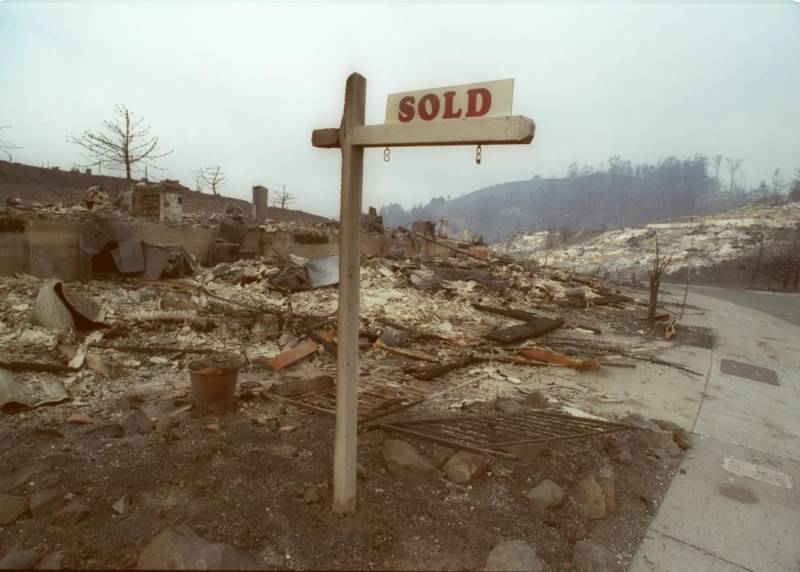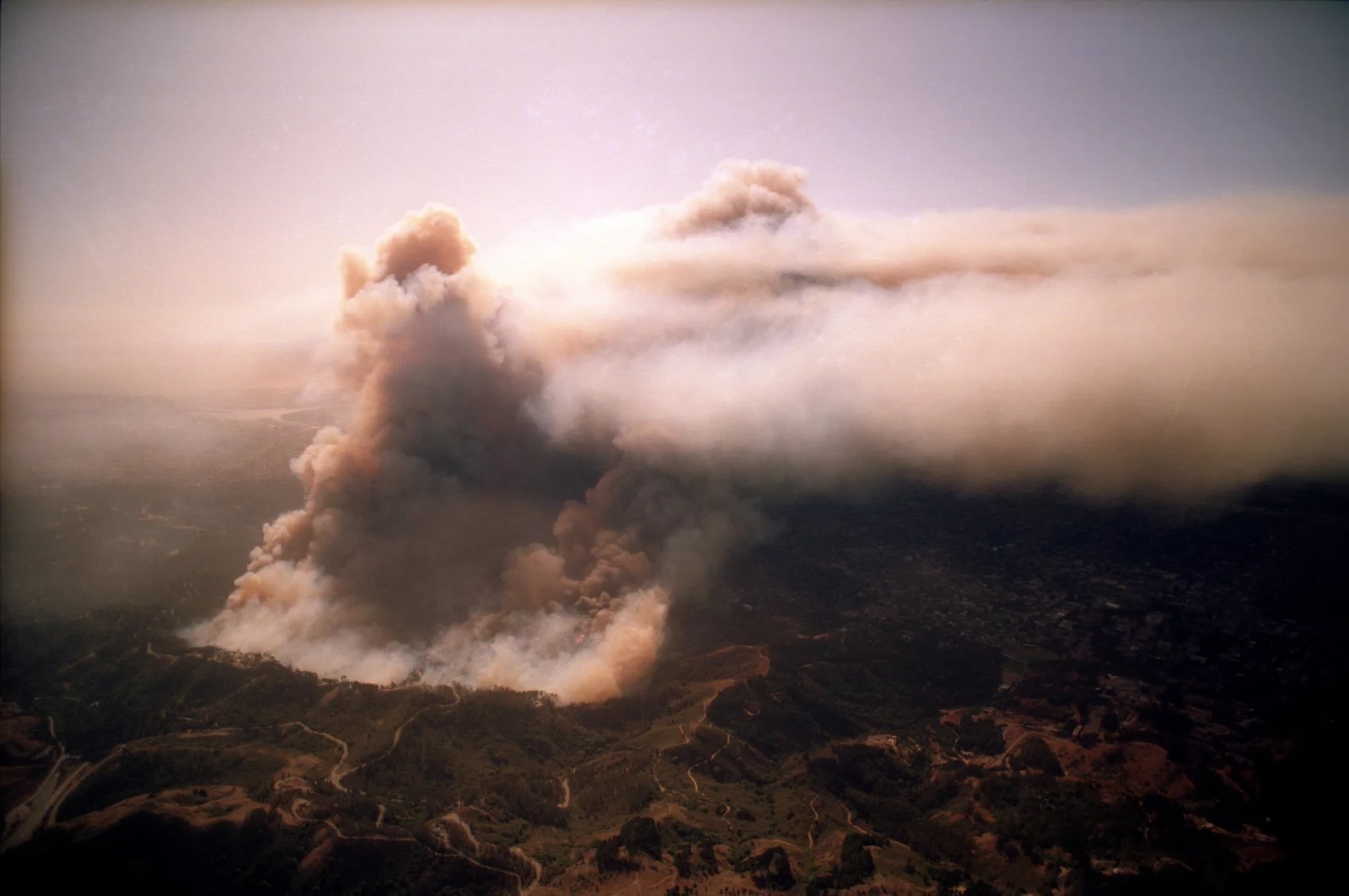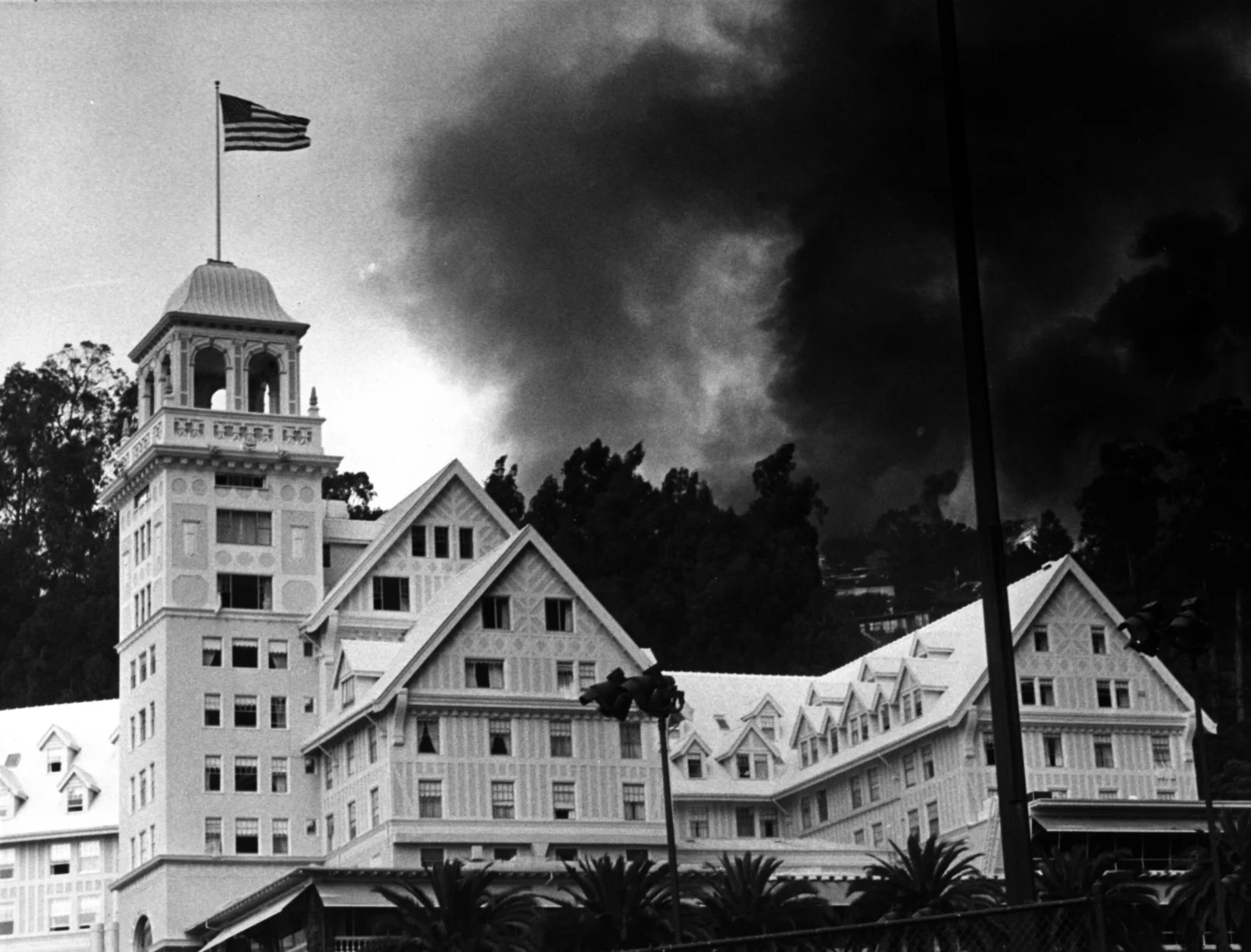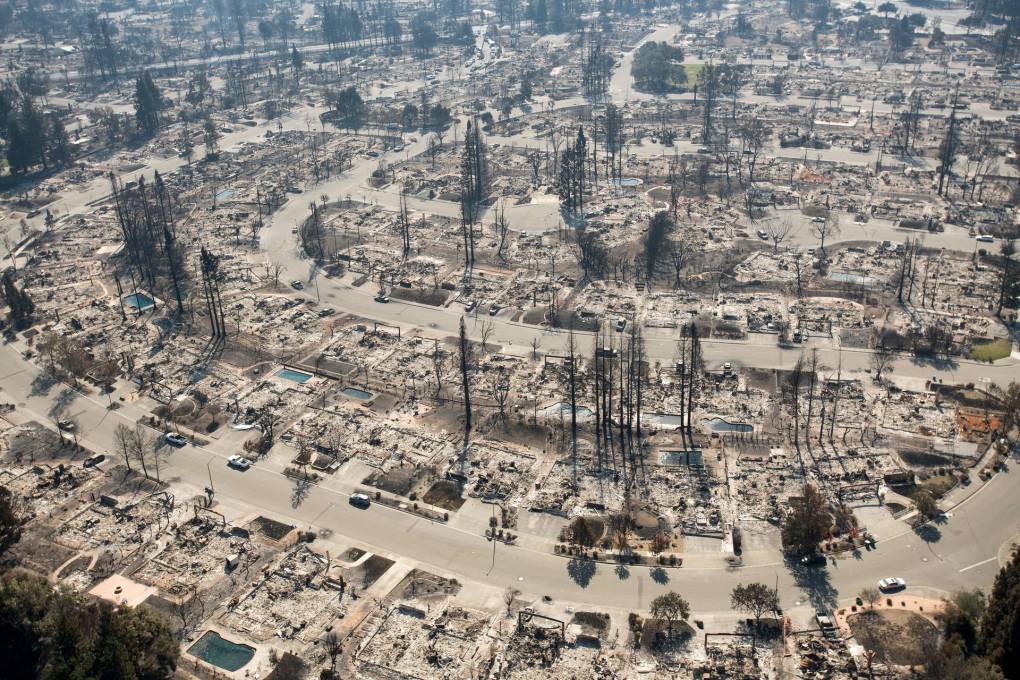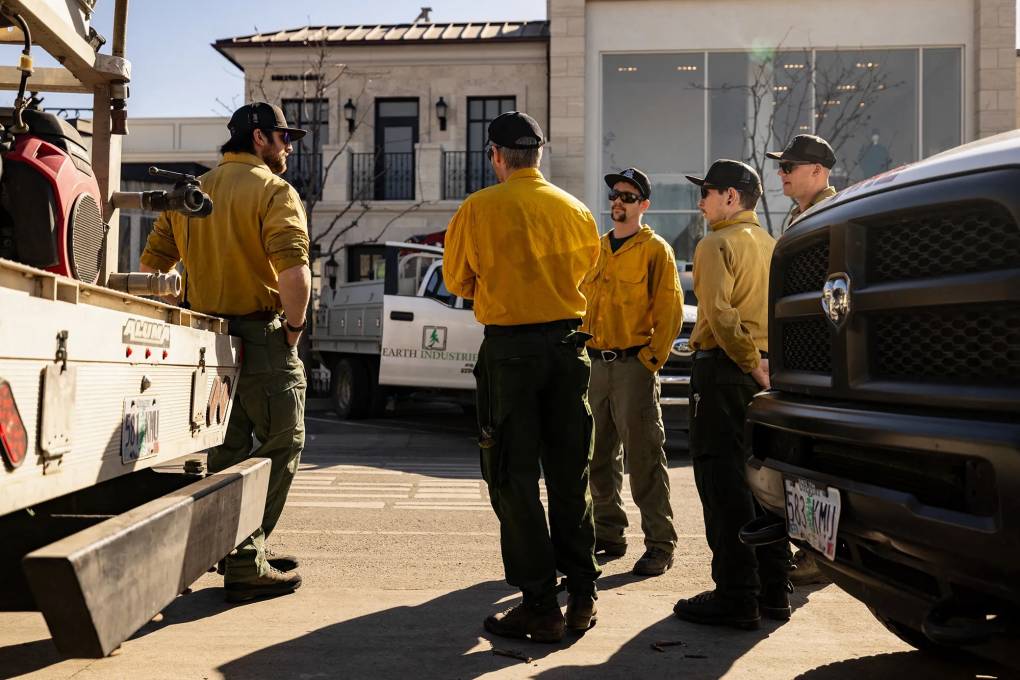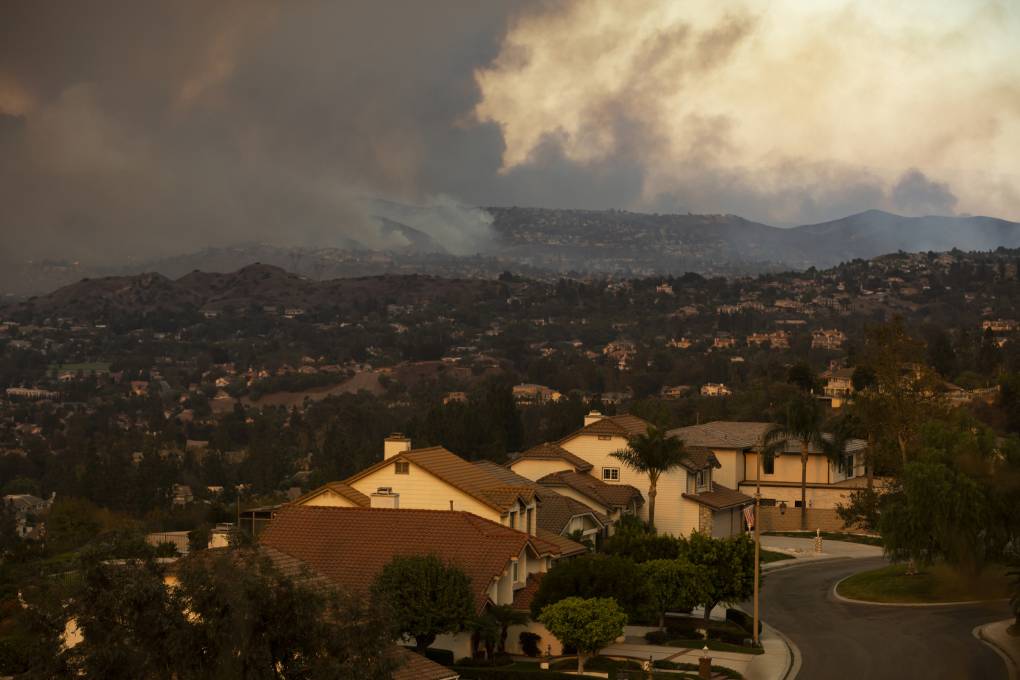One sort of obvious reason for this is these rebuilt houses were newer. And they were built to follow a more modern, state-mandated building code, making them more resistant to fire and earthquakes and generally safer. And, just as Wallace had observed in her own neighborhood, these rebuilt houses tended to be bigger.
And, in big wildfires, the houses in whole neighborhoods got built back bigger and better. Because the value of your house is influenced by the value of houses in your neighborhood, that was another boost to property values. Meanwhile, nature recovers — and, Wallace says, it recovers rather quickly in areas with Mediterranean climates — and the amazing beauty of these Californian communities returns.
Now, fires are obviously devastating in terms of lives lost, people hurt, disruptions to business, and so on. And for people who don’t have insurance, they cause huge financial losses. But — at least in the period the economists study, when, for the most part, there were functioning private insurance markets that offered full coverage and generous payouts — it seems like fires were actually a financial win for the average insured homeowner who lost their home. They were also a win for developers and construction companies, which rebuilt the homes. And they were at least partially a win for municipalities because rebuilt, more valuable homes meant higher property taxes, offsetting the tremendous taxpayer costs of fighting the fire and cleaning up afterwards.
Of course, there was at least one huge financial loser in all of this: insurance companies. They had to foot the massive bill for home reconstructions.
In normal insurance markets, that’s fine. People pay premiums, and those premiums are estimated based on the probability of losses. When those losses materialize, the insurance company pays. It’s the whole game.
But, Wallace says, something funky began happening in California’s insurance markets, and the state’s insurance system ended up breaking down.
How California’s insurance market failed
First, the state has had restrictive regulations on what insurance companies can charge. Wallace says that a big force behind that was Proposition 103, which was championed by Ralph Nader. Back in the 1980s, Nader and other consumer activists argued that insurance companies should be strictly regulated when setting their premium rates. This ballot initiative, which was narrowly approved by California voters in 1988, required insurance companies to get rate hikes approved by the California Department of Insurance, and it introduced a bunch of measures that made rate hikes much harder to impose.
In this post-Prop 103 regulatory scheme, for example, the state prevented insurance companies from using forward-looking estimates of risk — so-called “catastrophe models” — when setting their rates. Consumer advocates saw these kinds of models, which use computers to forecast an uncertain future, as a Trojan horse for price-gouging. The state forced insurers to only use backward-looking estimates of risk. They figured it was more transparent and fair to use hard, verifiable data from the past. The state required insurers to base their premium rates on a 20-year average of historical losses. It also prevented insurers from pricing into their premiums the cost of “reinsurance,” or insurance for insurers — something that insurers sometimes need after extreme weather events require massive payouts.
With these and other measures, the California Department of Insurance effectively kept home insurance premiums artificially low. And, Nancy says, that had some big side effects, like incentivizing more people to live in fire-prone areas.
“Prices are important, especially for things like where people locate, where houses are built,” Wallace says. Artificially low insurance prices, for example, may have encouraged cities and developers to build neighborhoods closer to the flammable wilderness. In fact, in recent decades, fire-prone areas have seen some of the fastest population growth rates in the state.
And greater density in fire country may have contributed, Wallace says, to problems like narrow roads prone to traffic jams, making escapes from wildfires — like the one she personally made — much harder. And this increased number of people living in fire-prone areas meant that taxpayers had to invest much more in firefighting and other public services to keep people safe.
For a time, California’s insurance system was maybe workable. Big, destructive fires used to be rarer, so the insurance system didn’t experience as much stress. But, Wallace says, around a decade ago, there was a tipping point where big wildfires started becoming more frequent and more destructive. California has seen hotter temperatures. Droughts have increased. Wind speeds have picked up. And big, destructive fires have become more commonplace.
With climate change, it has started to become clear that the future will not look like the past, and California’s regulations requiring insurers to make pricing decisions based on backward-looking models of risk have started to look pretty dumb.
In a free market for insurance, a higher risk for catastrophe would result in higher insurance premiums. But since California regulations prevented that, insurance premiums stayed artificially low. As big fires began demanding big payouts and the specter of more mass destruction loomed larger, insurance companies struggled to make the math work. And so they began fleeing the state.
“The California Department of Insurance is seriously at fault,” Wallace says. “They destroyed the markets.”
With no ability to get standard private insurance, many Californians, especially in high-risk areas, were forced onto the state-created insurance plan of last resort, the California FAIR Plan (which is funded by private insurance companies and their policyholders in exchange for these insurers being able to sell property insurance in the state). This plan was not meant to be a permanent solution. It’s a high-risk pool. It’s expensive and it caps insurance payouts, so people with valuable properties, for example, can’t get the full value of their homes insured. (For more on the Fair Plan, listen to The Indicator’s recent podcast episode, “Who’s on the hook for California’s uninsurable homes?”)
Last year, seeing insurers fleeing their state — and perhaps seeing the studies by Wallace and others — California regulators came to the conclusion that the state’s insurance regulations were unworkable. California’s insurance commissioner, supported by Governor Gavin Newsom, ended the ban on using forward-looking catastrophe models for setting premiums, giving the green light to the insurance industry to start actually trying to price in the rising risk and cost of wildfires. As part of this deal, insurers have agreed to underwrite more policies in fire-prone areas. Those changes took effect mere weeks ago, just before the outbreak of fires around Los Angeles.
Governor Newsom recently touted the fact that, after these changes took effect, a private insurer agreed to insure homes in the town of Paradise, which notoriously burned entirely to the ground in 2018 (listen to this 2021 Planet Money episode about efforts to rebuild the town).
“ I thought that was an absolutely crucial step,” Wallace says of California’s recent reforms to how it regulates insurance markets. “Now we have to get to work and figure out what the true pricing should be.”
What is the right price for living in fire country?
Finding the right price for insurance premiums entails building and refining statistical models that can nail down the risks of wildfires for houses and businesses around the state. The current models, Wallace says, are not good enough. Insurance companies and the government, she says, “literally do not know” what the real risks are. There is quite a bit of uncertainty about, for example, how far fires can spread, which exact homes are the most at risk, and whether big fires in certain places are like 50- or 20- or 10-year events. Inaccurate estimates of fire risks, Wallace says, could result in premiums that are too low, as has been the case for a while in much of California, but also too high in some cases.
And that’s why she and her colleagues at UC Berkeley, and, more specifically, Wallace’s lab at the Fisher Center for Real Estate and Urban Economics, have been building bridges across disciplines, marshaling the data and intellect of climate scientists, computer scientists, engineers, economists, and more to create high-tech models that can better estimate the risk of wildfires.
And that’s important. As we’ve seen, the costs of fire destruction are enormous. And someone has to pay for it. If homeowners want to continue living in fire-prone areas, Wallace says, they need to bear more of the risk and, in effect, pay higher insurance premiums.
“This risk cannot be borne exclusively by insurance companies,” Wallace says. “It’s also got to be borne by homeowners.” Bearing more of that risk would, she says, incentivize homeowners to take more actions to protect their properties (and fight what economists call “moral hazard,” or people’s tendency to not take steps to mitigate risk when they’re insured).
Beyond just accurately pricing wildfire risks, Wallace says, the government and insurance companies should work to incentivize and help homeowners to retrofit older, more flammable homes. Wallace points to a study by economists Patrick Baylis and Judson Boomhower. The economists find that California houses built after the mid-1990s — and, even more, those built after 2008 — are far more likely to survive wildfires. That’s because the state strengthened its building codes during those years, requiring that homes be built with, for example, more fire-retardant siding and roofs.
“In Paradise, in Sonoma, in Napa, the Woolsey fire, the houses that survive are those with the post-2008 building code requirements,” Wallace says. “The major problem in California is that our [older] housing stock is not built to withstand the embers and the radiant heat of fires.”
But updating California’s older housing stock is super expensive. Which is why Wallace wants policymakers and businesspeople to create new home loan programs, which would make it feasible for California homeowners to invest in making their homes more resistant to fire. She believes this could even be a money-making product for financial firms. “If you’re a bank, wouldn’t you like to invest in home loans that make the mortgages that you’re also planning to make safer?”
Wallace also hopes that, going forward, insurers could offer discounts on home insurance for taking anti-fire measures that lower risks, further incentivizing homeowners to protect their homes and reduce costs. This could be facilitated by technological innovations. For example, Wallace points to a former grad student of hers who actually created an app, Firebreak, which helps homeowners identify fire risks around their properties.
What happens after the fires in the LA hills?
As Wallace and her colleagues found in their study, for a long time, California homes that were destroyed by fires ended up getting bigger, better, and more valuable. Will the same thing happen again in the LA hills after the latest shocking fires?
Wallace suggests that it’s possible this time is different. For one, “We don’t have that insurance market anymore,” Wallace says. “It’s been broken by not allowing firms to price the risk.”
Many homes in the LA hills were forced off of private insurance policies that gave them full coverage, and they had to turn to the California FAIR Plan, which caps residential coverage at $3 million. There are a significant number of destroyed homes in the LA hills that were worth more than that. Wallace also points to less affluent neighborhoods, like Altadena, where many homeowners did not have insurance (only people with mortgages are required to have fire casualty insurance). Absent some sort of government help, many fire victims will likely be unable to afford reconstruction. In the wake of natural disasters, construction costs tend to surge because tons of people need to build all at once and there are shortages of everything.
Another big cost will be building back better. If the city and state are being sensible, Wallace says, they will make investments in better infrastructure, like a less fire-prone electricity grid and better water systems to fight fires, making it less likely for future fires to break out and spread. Even more, she says, the state should continue mandating that builders of new houses follow the building code that’s proven to be more resilient to fires. “It’s absolutely nonsensical to build back in the same risky way,” Wallace says. (Gov. Gavin Newsom recently issued a vague executive order on this issue, directing state agencies to waive building regulations to speed up construction, but only those regulations “that can safely be suspended.”)
Because of high costs and more limited insurance coverage and other factors, Wallace says, there may be fewer homes built in the L.A. neighborhoods devastated by fires. And, with higher insurance premiums reflecting the risk for buildings there, these neighborhoods will likely become even more exclusive dens for the rich.
Despite the current tragic circumstances, however, these burned-down neighborhoods still have a lot going for them. Their views of the ocean and the city are often incredible. Their charred parks and hiking trails will recover. And they’re still close to a legendary metropolis, with a vibrant culture, an incredible economy, and a housing shortage. The land in the L.A. hills is still very valuable.
“L.A. is a major, metropolitan, gateway city of the world,” Wallace says. “And it is not going away.”
And whether it’s floods or tornados or earthquakes or wildfires, human beings have a remarkable knack for comfortably living in areas with lots of risk.
Wallace expects that, if the state pursues the right path to make these neighborhoods more resilient to future fires and follows through with fixing the state’s broken insurance system, destroyed properties in the LA hills will be rebuilt, insurable in the private market, and they’ll eventually “return to trajectory,” increasing in value like they were in the years preceding the devastation.
As for the victims who lost everything in the fires, Wallace, reflecting on her own experience losing her home, advises people to begin creating inventories of the things they lost and working with builders to get real estimates of the costs to rebuild, keeping in mind that construction costs will likely climb as everyone else seeks to rebuild. Such information can be critical for getting adequate payouts. Insurers may provide a vital service, she suggests, but they’re not really your friends.
This first appeared in the Planet Money newsletter. NPR’s most recent Planet Money episode has more on the fires in California.
